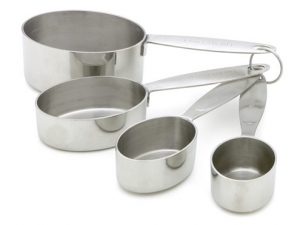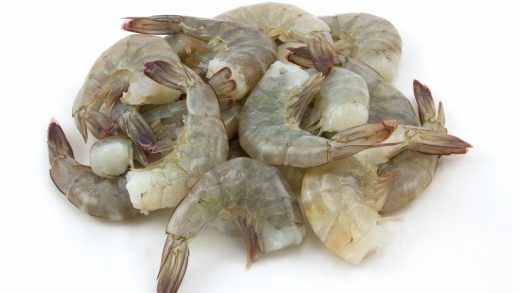Here’s a good question. If weighing ingredients like flour is more accurate by weight than volume, why do almost all recipes use cups and other volume measurements?
Most of us are used to using measurements like cups and teaspoons. We are less familiar with ounces or grams. But we really need to learn how to measure many ingredients by weight instead of volume.
To help, we are providing you here with a list of measurements converted to weights. More and more, a kitchen scale is an essential kitchen tool if you do a lot of cooking. If you do a lot of cooking, especially baking, you should invest in an inexpensive one.
In general, most flours measure out as four and one half ounces per cup. Cake and pastry four weigh slightly less at four ounces per cup. Most cups of sugar weigh in at seven ounces, except for powdered or confectioners sugar, which weighs only four ounces per cup.
Liquids generally weigh eight ounces per cup, except for honey, which is 50% heavier.
Save this conversion chart for future use:
Dry Ingredients:
All-Purpose Flour: 1 cup = 4 1/2 oz
Bread Flour: 1 cup = 4 1/2 oz
Whole Wheat Flour: 1 cup = 4 1/2 oz
Cake Flour: 1 cup = 4 oz
Pastry Flour: 1 cup = 4 oz
White Granulated Sugar: 1 cup = 7 oz
Brown Sugar: 1 cup = 7 1/2 oz
Powdered Sugar: 1 cup = 4 oz
Chopped Nuts: 1 cup = 4 oz
Liquid Ingredients:
Most liquids: 1 cup = 8 oz
Water: 1 cup = 8 oz
Milk: 1 cup = 8 oz
Cream: 1 cup = 8 oz
Yogurt: 1 cup = 8 oz
Sour Cream: 1 cup = 8 oz
Honey: 1 cup = 12 oz
Oil: 1 cup = 7.5 oz
Butter: 1 cup = 8 oz
For those who prefer grams: 1 ounce = about 28 grams.



